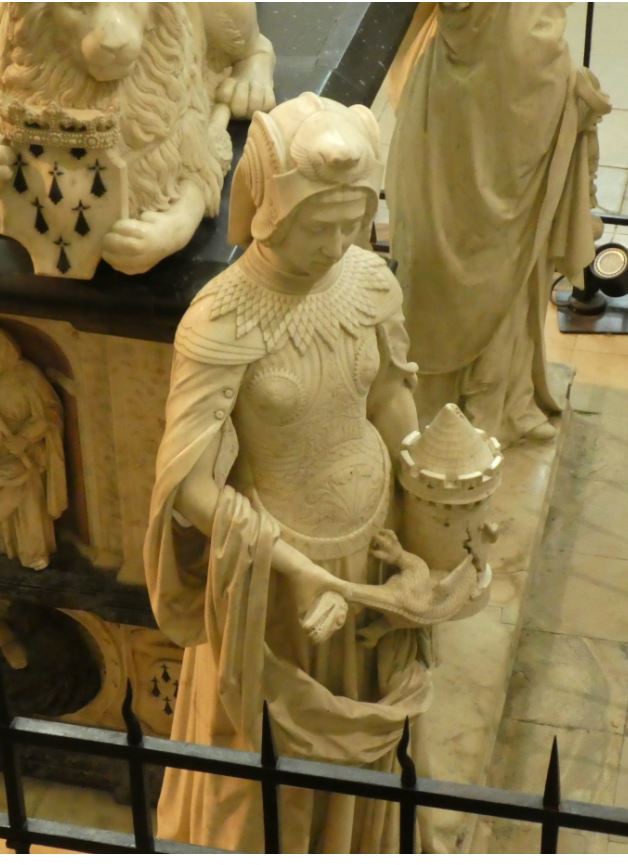
Nantes, France - Alchemic and Egyptian symbolism
A very amazing sculpture that can be found in the Cathedral of St. Peter in Nantes. Not only is it an amazing Renaissance work of art, made out of Carrara marble by sculptor Michael Colombe, but contains a treasure trove of alchemic and Egyptian symbolism. I literally spent three hours just examining and photographing it, so as to fully enjoy the fine carving and the detail of the symbolism. As of yet no analysis appears on the internet on this sarcophagus, save a small page on Wikipedia, hence my reason to produce this article for all of you.
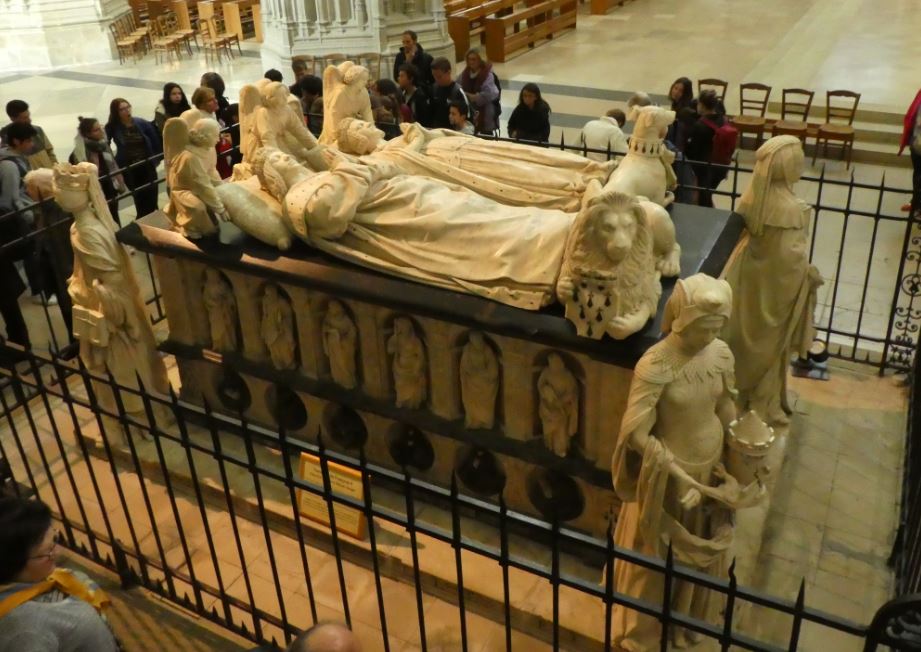
The monument is the Tomb of Francis II, Duke of Brittany and includes him and his second wife (Anne of Brittany) laying on top of a rectangular sarcophagus, 3.90 by 2.33 by 1.27 meters. The couple lay flat while their heads rest on spectacular sculpted pillow. A greyhound (who I will show is Anubis) is at the woman’s feet, while Francis has a lion at his. At the four corners of the tomb are four female statues, said to each be representing one of the cardinal virtues: Courage, Justice, Temperance and Prudence.
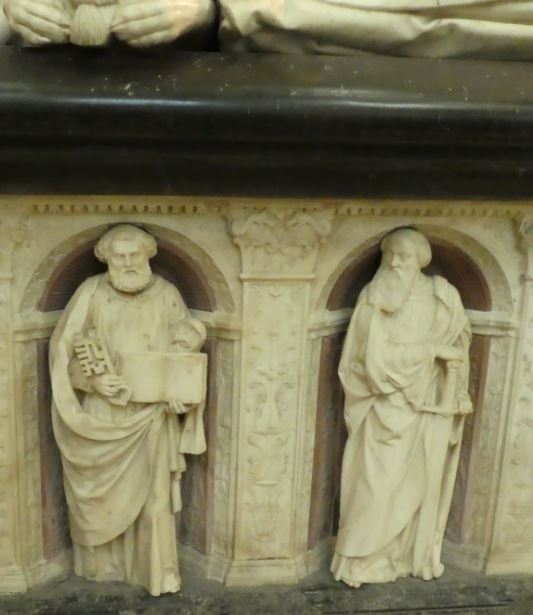
Upon the tomb are other sculptures in small niches that represent the twelve apostles; the patron saints of Francis; Charlemagne and Saint Louis. The top line of these figures are all in white while the bottom section has a dark paint added.

I want to start with the four female figures as they are beyond extraordinary. I see them as the four female deities of Egypt (Isis, Nepthys, Neith and Selkit) that were often placed at the four corners of a Middle or New Kingdom Egyptian Tomb, as can be found as gilded gold statues with Tutankhamen.
The first woman is known as courage, wearing armor and helmet as a warrior. This of course is Selkit, and the sting of the scorpion which requires courage to go near, as we need courage to go near the parasitic mind and sting it to death with her knowing. In he hands is a tower, which has a dragon bursting out. The dragon is the egoic mind. Notice how the dragon is turned over (to a dead or submissive position) and she holds the dragon by its throat. She has total control of the dragon. She also symbolized the Knight Templar, removing the dragon from the tower in the mythology.
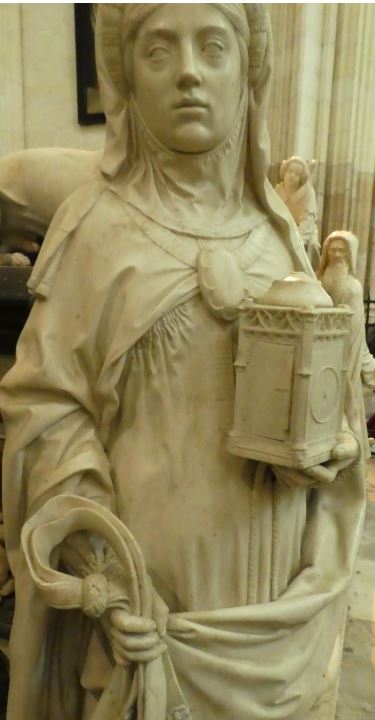
Temperance (Neith) is holding the horse’s bridle with her right hand, the active symbol of the control of the animal like thoughts of the conscious mind. In her left hand is a clock, symbol of being in control of time. There is also upon her chest a giant broach (in the shape of a scarab, the symbol of the rising sun and rising consciousness).
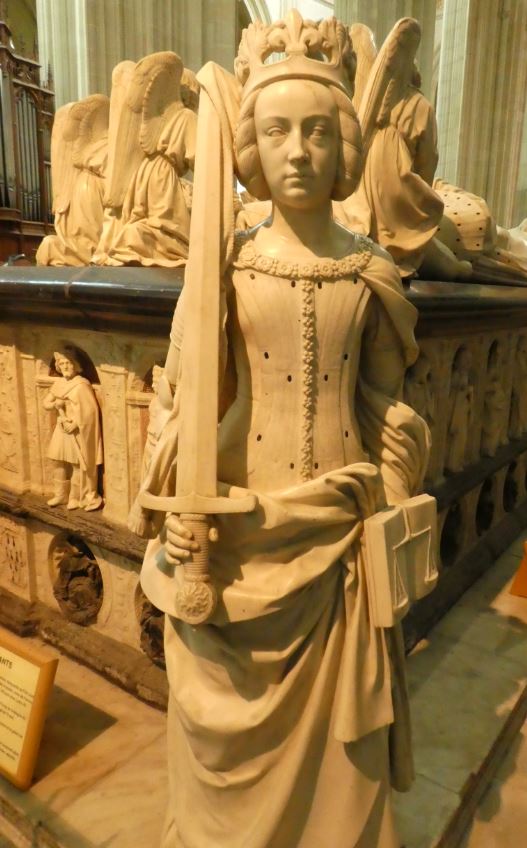
Justice has a book in her left hand, representing the Universal Law (or Universal wisdom), and holds the scales to symbolize balance. Normally the 4th figure of Egypt was Nepthys, but here this is obviously Maat- she who balances the scales of the universe to create universal balance and harmony. The scales are over top of the open book, as if to say in reading the book of universal law one will obtain universal harmony. In her left hand she holds a sword, upright and ready, yet in control of outward actions.
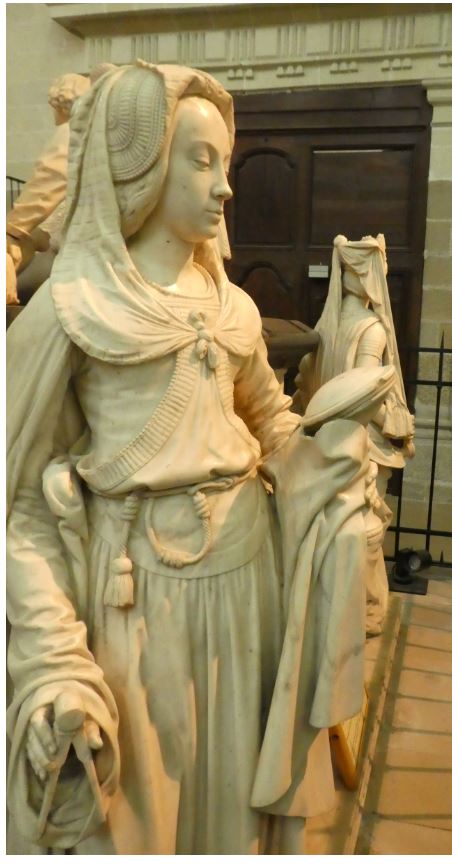
Prudence (obviously Isis) holds in her right hand a compass, symbolizing the knowledge of the creation (as the great universal architect in Alchemic art is often shown with the open compass). In her left hand is a mirror, not only to symbolize the bouncing of thought into reality, but also to symbolize, duality of the dream world, and he seeing into and through the dream.
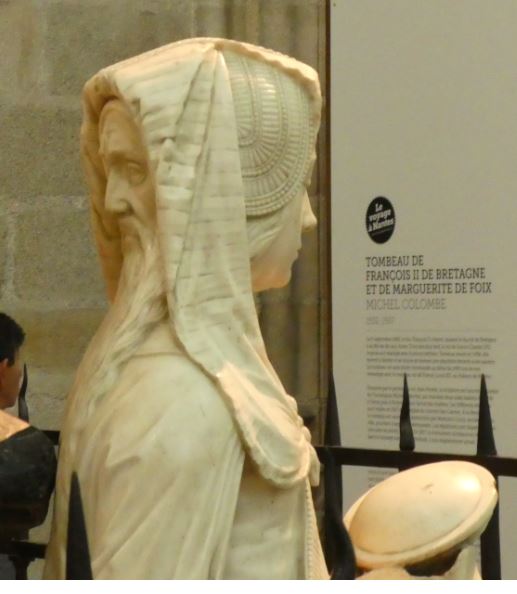
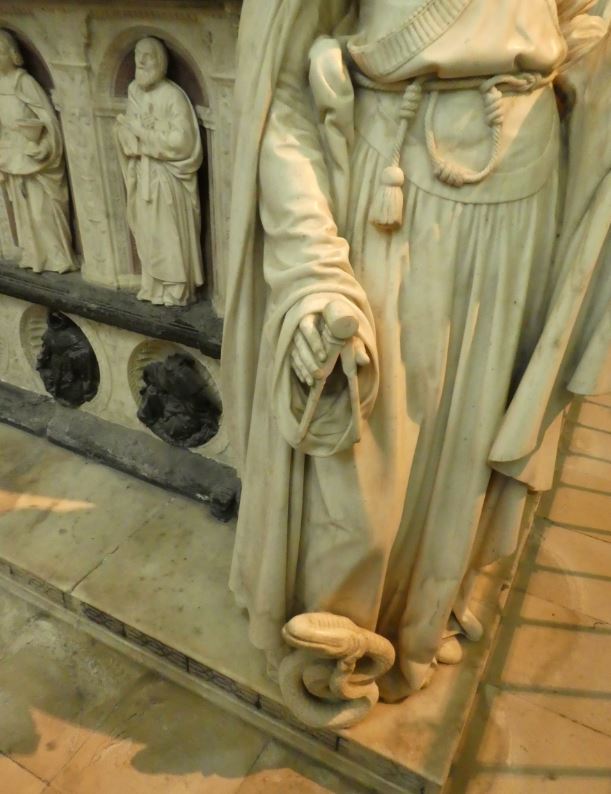
This is more symbolized by the two faces the figure had. A young woman who looks forward, and an old man looking behind. The old man can be the wisdom of the past, or more likely her husband Osiris (the All Black of the Absolute) thus the figure can see as a female into the mirror of the dream, while also able to see into Ultimate reality. There is no greater image than this female statue to depict how one need to operate after awakening with one foot in the dream, one foot in the Absolute.
Again was see the greyhound (symbolizing Anubis or his form of Upuat) depicted in the same position in Egyptian funerary art, and he will be the one that leads the way for the newly deceased through the challenging after death world. The lion (usually thought to symbolize strength or crown of Brittany) is a symbol of Horus as the Sphinx- one always in command of all.
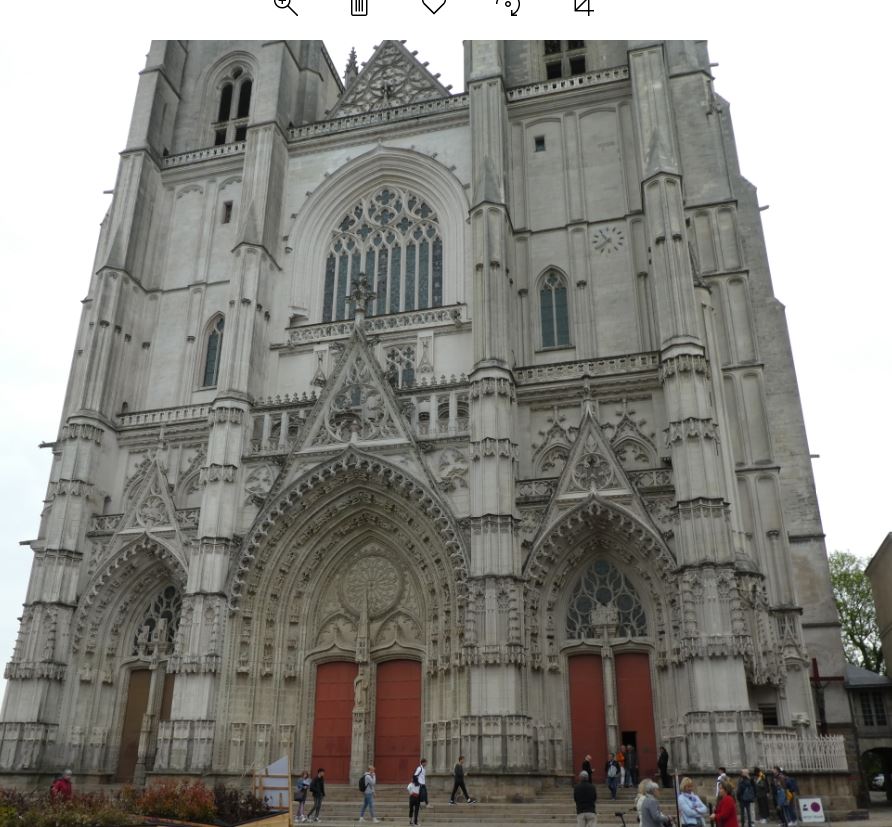
This is far less a symbol of a departed couple, but in fact a giant symbolic teaching tool. IT would not surprise me that Francis II of whom this was made, was a member of the Knight’s Templar (Even though the order was supposed to have been suppressed almost 200 years earlier). Recall that this is the each time that the Renaissance is supposed to be in full swing, Michelangelo is painting the ceiling of the Sistine Chapel. There is far more in this church (such as a painting by Danish artist) of the burial of Jesus, and so much more in the city of Nantes itself. But I leave you with this as a stand alone examination of ancient alchemic wisdom on display without anyone really recognizing what it is.
Note: All photographs are from the author